SDG 15.3.5 Collaboration for shared land ecosystems
NCUE has multiple ongoing projects and activities, including the Environmental Education Center’s “Beautiful and Treasured Clams in Fangyuan and Dacheng: Sustainable Industry and Environment Project of Changhua’s Two Cities Amid Climate Change“ ; Biology Department’s “Long-legged Ant (Nylanderia fulva) Surveillance, Monitoring, and Control”, and “Assessment of Flying Ant Infestation and Control Strategies in Kaohsiung City” ; Department of Arts ”Ecological Homelands and Urban-Rural Sustainability: A Changhua Ecological Art Project”, as listed in Table 1. These will be described briefly in the following section.
Table 1. Related projects and events
|
Project activities |
Subsidized units |
|
Beautiful and Treasured Clams in Fangyuan and Dacheng: Sustainable Industry and Environment Project of Changhua’s Two Cities Amid Climate Change |
Ministry of Education |
|
Long-legged Ant (Nylanderia fulva) Surveillance, Monitoring, and Control |
National Parks Administration |
|
Assessment of Flying Ant Infestation and Control Strategies in Kaohsiung City |
Kaohsiung City Government Agriculture Bureau |
|
Survey of the Distribution of the Invasive Yellow Crazy Ant in the Hotspots of Land Crab Distribution in Gaomei Wetlands |
Taichung City Government Agricultural Bureau |
|
Kenting National Park Yellow Crazy Ant Control Plan |
Kenting National Park Management Office |
|
Invasive Red Imported Fire Ant Control Operations |
Taoyuan International Airport Corporation |
|
Ecological Homelands and Urban-Rural Sustainability: A Changhua Ecological Art Project |
Ministry of Education |
1. Beautiful and Treasured Clams in Fangyuan and Dacheng: Sustainable Industry and Environment Project of Changhua’s Two Cities Amid Climate Change
In the course "Sustainable Development and Practices of Coastal Biological Resources" offered by the Department of Biology, College of Science, a citizen survey of important coastal wetlands was organized. Participants included faculty, students, local residents, and groups. The survey focused on the ecology and resources of key economic shellfish species along the Changhua coast.
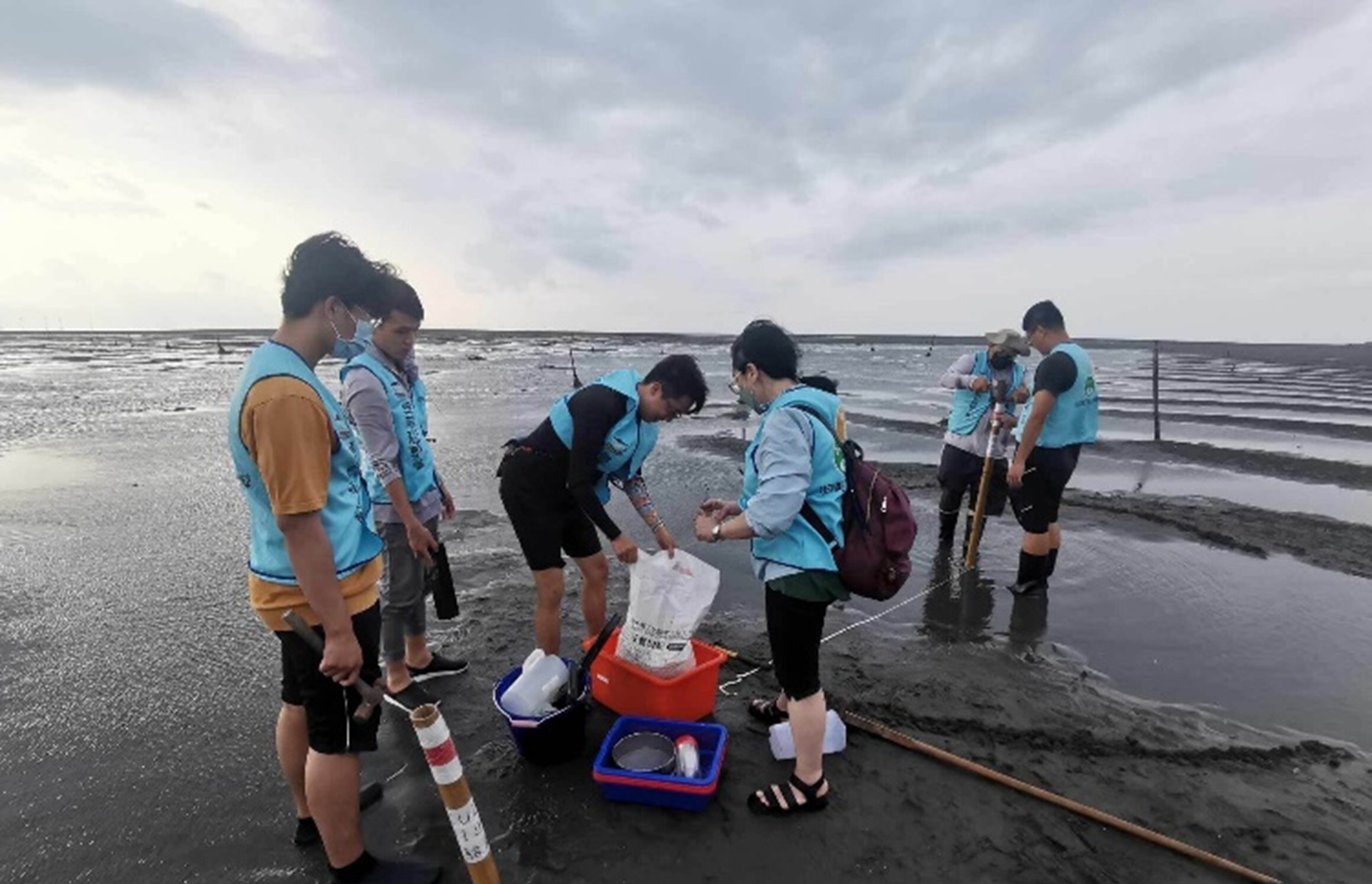
Figure 1. 2023/05 In the course "Sustainable Development and Practices of Coastal Biological Resources," a citizen survey was conducted. Participants included faculty, students, local residents, and groups. The survey focused on the ecology and resources of important economic shellfish species along the Changhua coast
2. Long-legged Ant (Nylanderia fulva) Surveillance, Monitoring, and Control
In recent years, the coastal forests of Shoushan National Nature Park and the Qijin sea dike in Kaohsiung, which are important habitats for land crabs, have seen the emergence of the invasive Yellow Crazy Ant (Anoplolepis gracilipes Smith, 1857). This aggressive alien ant species has been reported to cause significant ecological harm in its invaded areas, such as Christmas Island in Australia and various Pacific islands, particularly impacting local land crab populations.
In 2010, the "Shoushan National Nature Park Yellow Crazy Ant Survey Project" found the presence of Yellow Crazy Ants in three land crab hotspots: the coastal areas of Shoushan and around the Qijin sea dike. The 111th year "Shoushan National Nature Park Yellow Crazy Ant Monitoring and Control Plan" implemented liquid bait and insect growth regulator baits in Qihou Mountain and used artificial bait traps to collect 70 ant nests, 348 queens, and approximately 130,557 workers. This survey indicated that the ant population poses a threat to land crabs.
The plan for the upcoming period includes continuing the monitoring of Yellow Crazy Ant populations in the three land crab hotspots: Banping Mountain, Beishoushan Military Control Zone, and Qihou Mountain. Control measures will involve the use of liquid bait and insect growth regulator baits, with an increase in artificial bait traps in Qihou Mountain and Banping Mountain to assess the effectiveness of these measures.
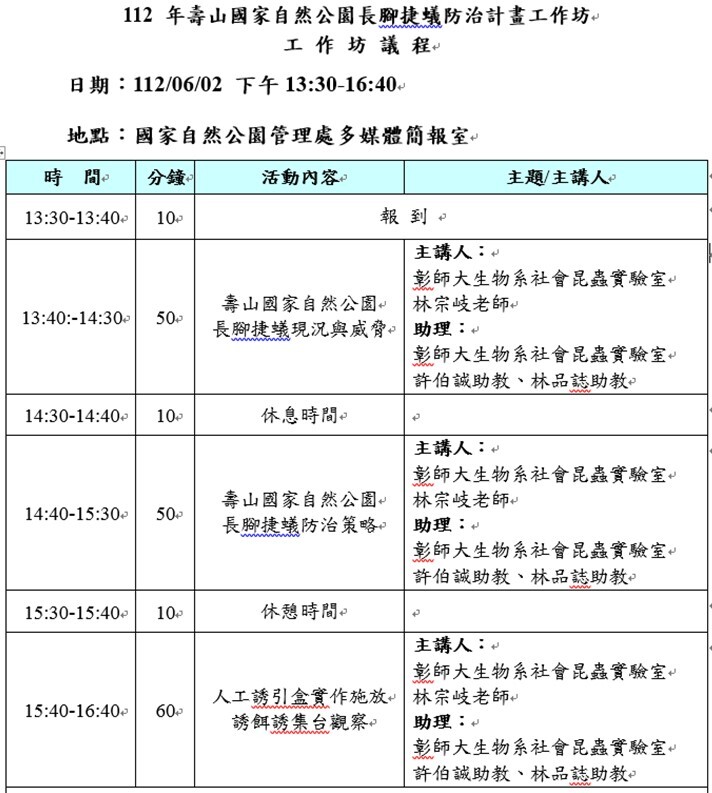
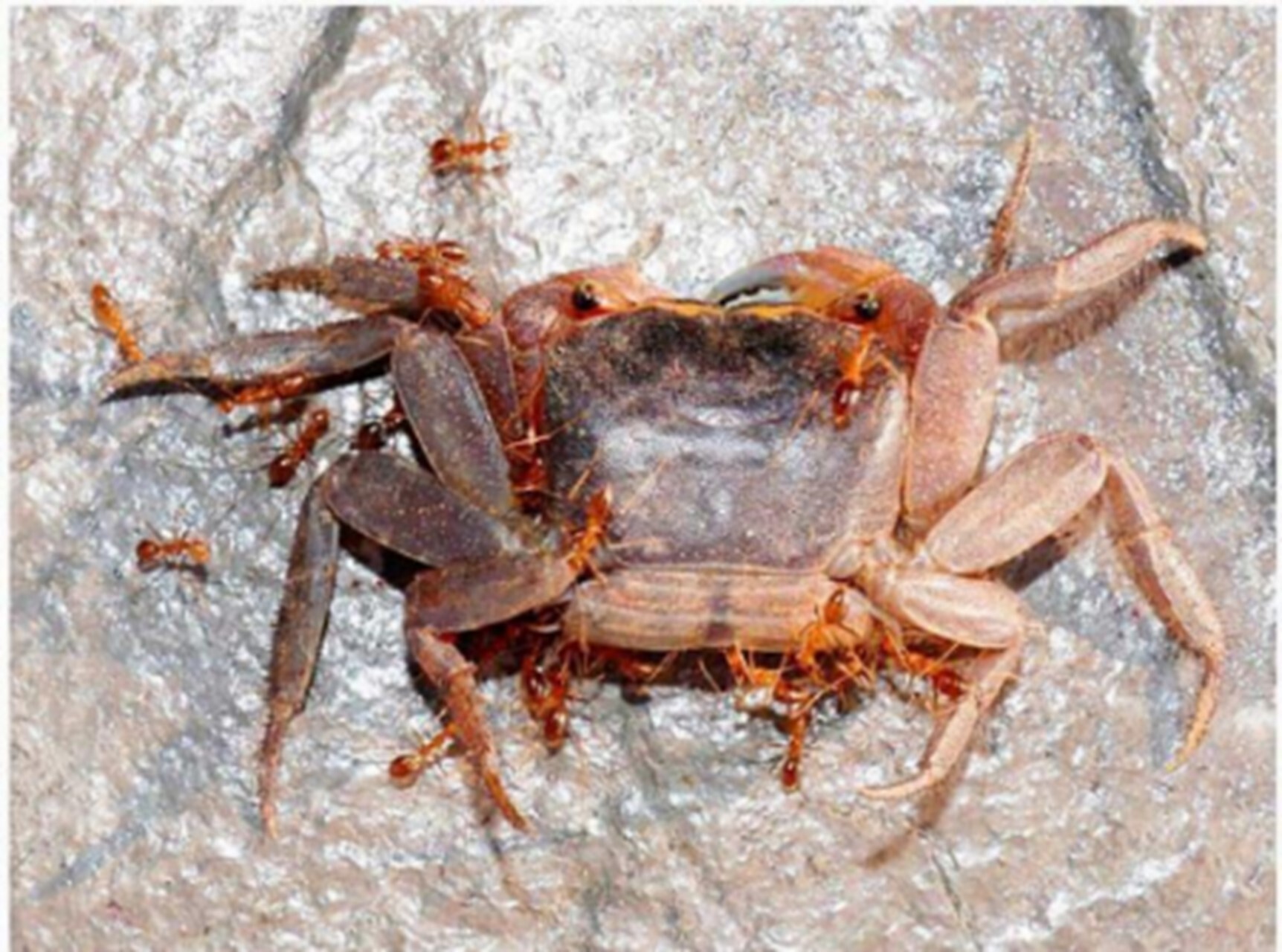
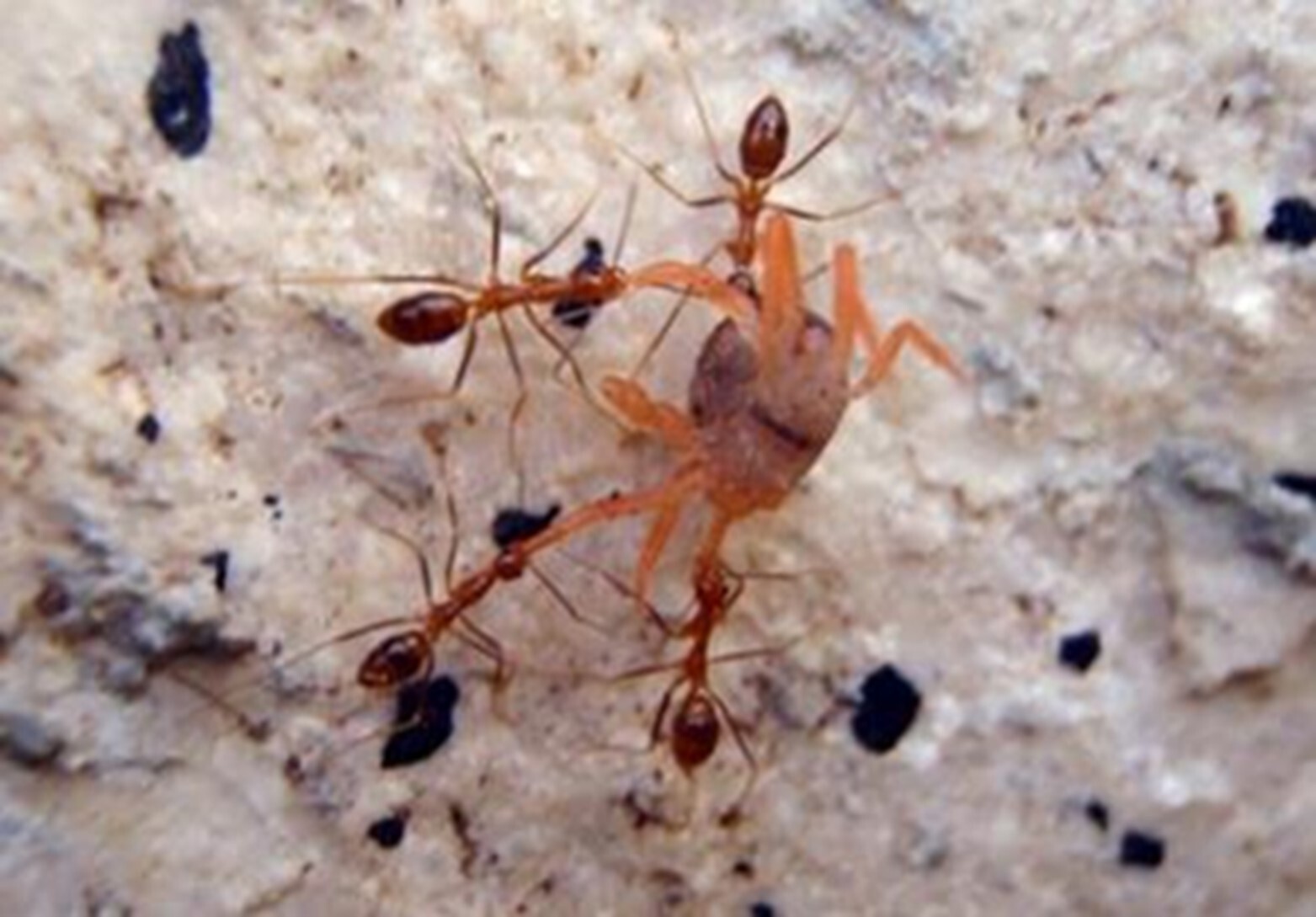
Figure 2. Impact of the Yellow Crazy Ant on Land Crabs
3. Assessment of Flying Ant Infestation and Control Strategies in Kaohsiung City
In recent years, Qimei District in Kaohsiung City has faced severe disturbances from flying ants during the summer and autumn evenings. Experts have identified these ants as the Technomyrmex brunneus. During their nuptial flight period, the queens and males exhibit phototactic behavior, leading them to be attracted to lights at night. This results in large-scale invasions of rural houses, residential areas, and businesses, causing significant disruptions and impacting local tourism, which has led to considerable distress among residents.
The Project Duration: January 2022 to November 2022
Objective: To address and manage the infestation of Brown Crazy Ants in the affected areas.
Scope of Work:
Survey and Monitoring:
Establish 18 experimental control areas across four districts: Liugui, Meinong, Shanlin, and Jiaxian. Conduct environmental and infestation cause investigations in 10 communities in Liugui, 3 communities in Meinong, 3 communities in Shanlin, and 2 communities in Jiaxian. Control Measures: Develop and test control strategies for Brown Crazy Ants.
Set up demonstration areas to showcase effective control methods.
Isolation Strategies: Implement isolation zones between Brown Crazy Ant breeding sites and residential areas in designated locations (Liugui and Meinong).
Evaluate the feasibility and effectiveness of isolation strategies, such as using light sources for isolation, large-scale bait application techniques, and microbial control methods. Expected Outcomes: Provide solutions for managing the mass nuptial flights of Brown Crazy Ants.
Offer recommendations for effective control measures to mitigate the impact on local communities and tourism.
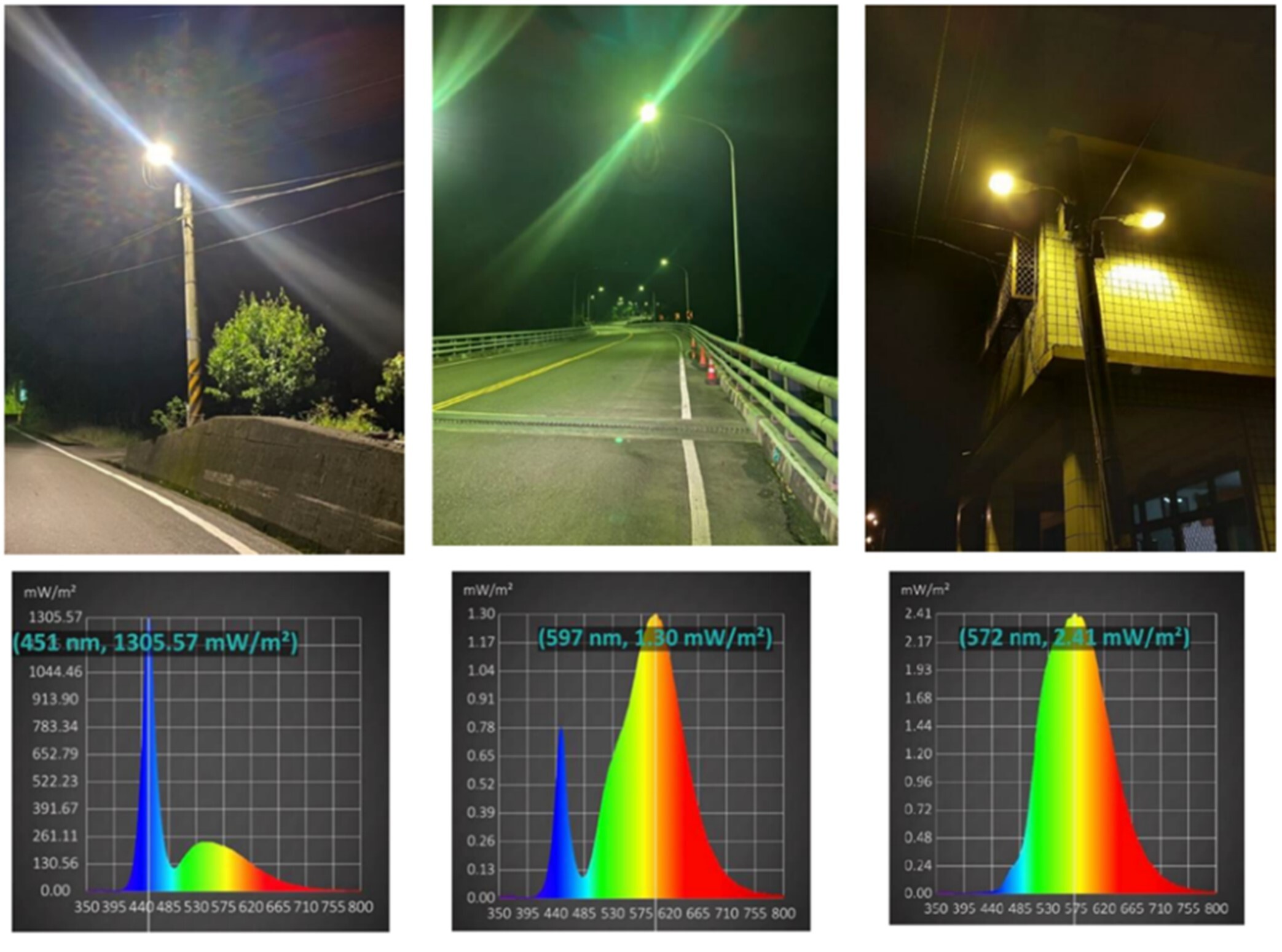
Figure 3. White LED Light and Light Spectrum (Top and Bottom Left Images). Replacement of Yellow Light Fixtures and Light Spectrum (Top and Bottom Center Images) Installation of Yellow Light Covers, Yellow LED Lights, and Light Spectrum (Top and Bottom Right Images)
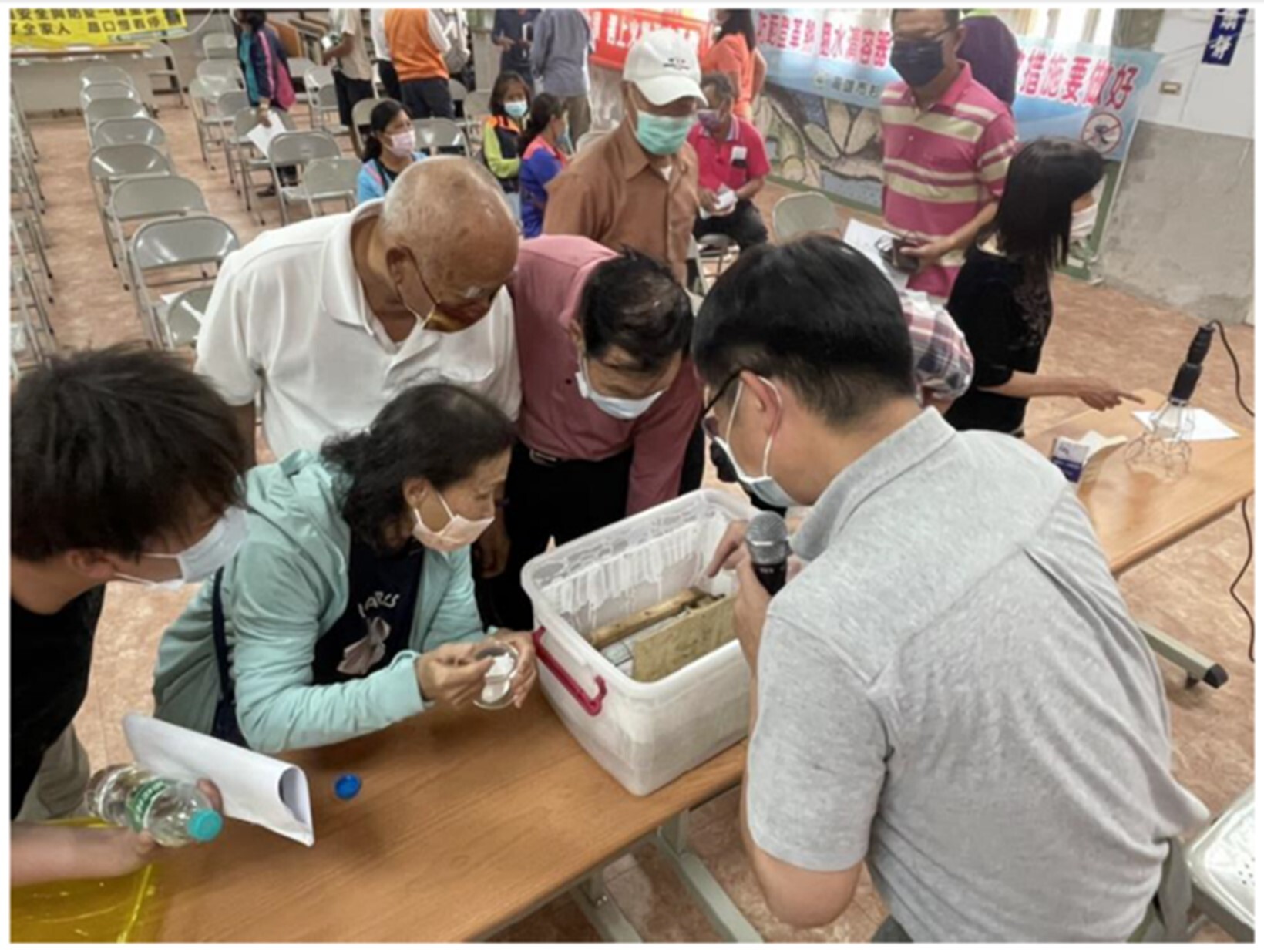
Figure4. On April 19th, outreach and guidance for the Technomyrmex brunneus (Brownish Glass Ant) control were conducted in Jiaxian and Shanlin District of Kaohsiung, with group consultations and local residents.
4. Survey of the Distribution of the Invasive Yellow Crazy Ant in the Hotspots of Land Crab Distribution in Gaomei Wetlands
Gaomei Wetlands boasts rich terrestrial crab ecological resources. However, in recent years, the invasion of the Yellow Crazy Ant, listed among the top 100 most serious invasive species in the world, has impacted the survival of the crab population. This study completed four monitoring surveys of the Yellow Crazy Ant this year (in April, June, August, and October). The results show that throughout the year, the Yellow Crazy Ant was detected at 25 sample points, categorized as follows: 6 points with level 1 light damage, 5 points with level 2 moderate damage, 9 points with level 3 high damage, and 5 points with level 4 severe damage. Compared to the data from the previous two years, both the distribution and density of the Yellow Crazy Ant have increased, with the main distribution concentrated in the southern end, the central front, and the central rear of the sample areas. Additionally, during the June survey, an observation was made of Yellow Crazy Ants attacking terrestrial crabs. This evidence indicates a growing trend in the Yellow Crazy Ant population. It is recommended to continued monitoring of its distribution and density is recommendedand resumpt of control efforts next year.
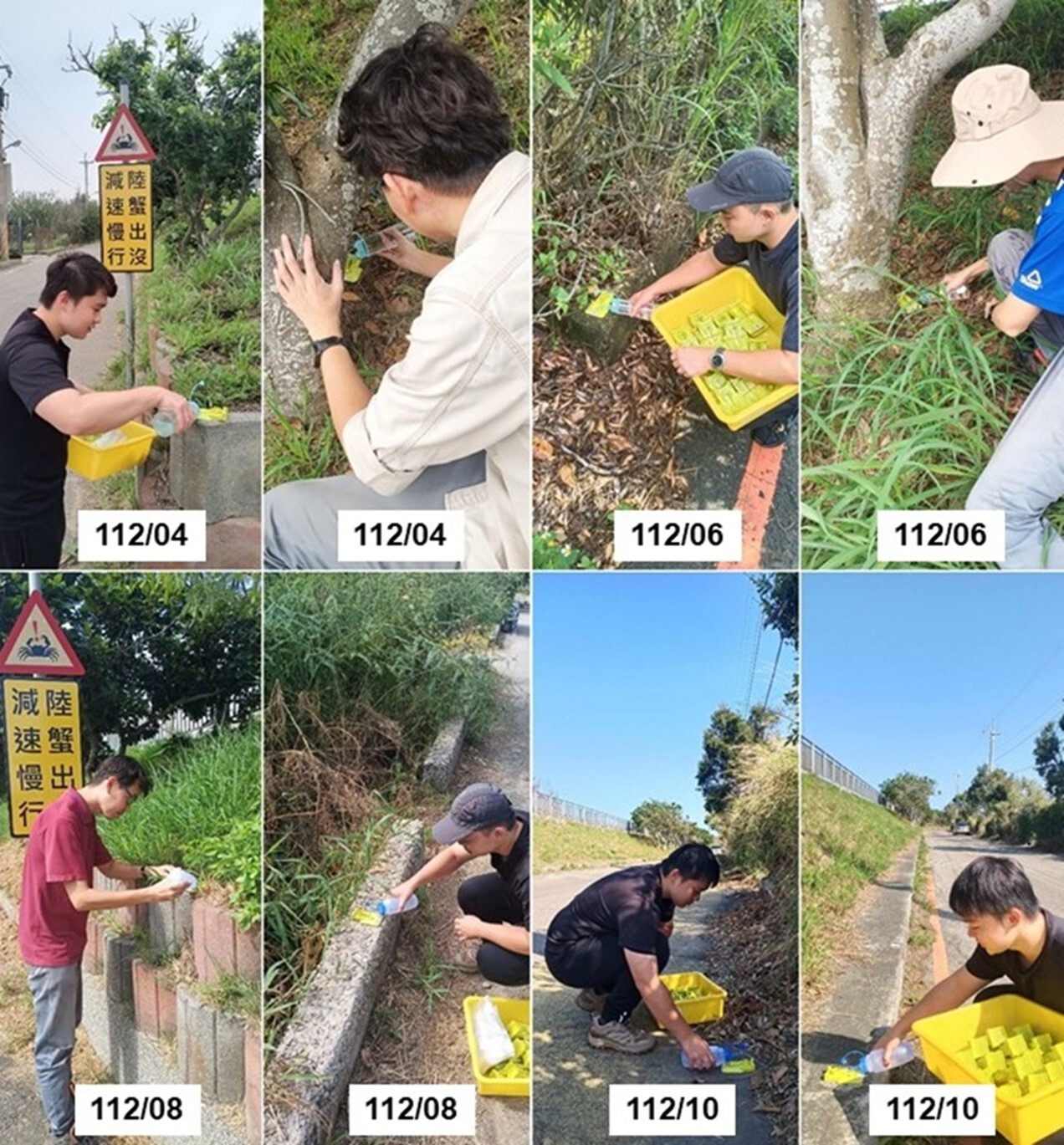
Figure 5. Placing liquid bait stations in the sample areas; the investigation conducted from April to October 2023.
5. Kenting National Park Yellow Crazy Ant Control Plan
Referring to the strategy used by the Australian government to control the super colonies of Yellow Crazy Ants on Christmas Island through widespread bait application, which successfully reduced the population of these supercolonies, the Kenting National Park Yellow Crazy Ant control plan will continue the previous bait application strategy. This plan will increase the bait dosage in key terrestrial crab hotspots and enhance bait application efforts in port areas to control the expansion of Yellow Crazy Ant supercolonies and reduce their threat to terrestrial crabs. Additionally, liquid bait stations and artificial ant nest traps will be used to monitor the population dynamics of Yellow Crazy Ants within the treatment areas, to assess the effectiveness of the bait application, and to continuously evaluate and refine the long-term control strategy for Yellow Crazy Ants in Kenting National Park.
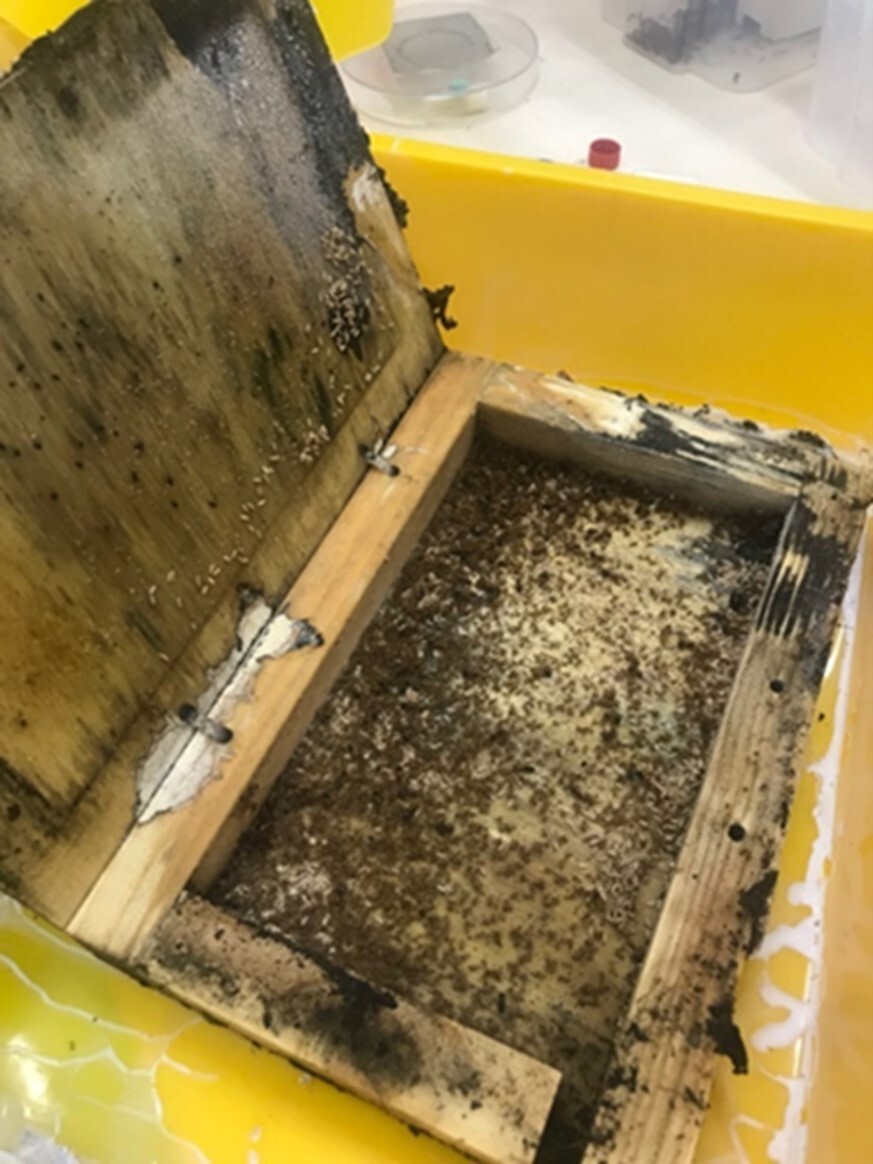
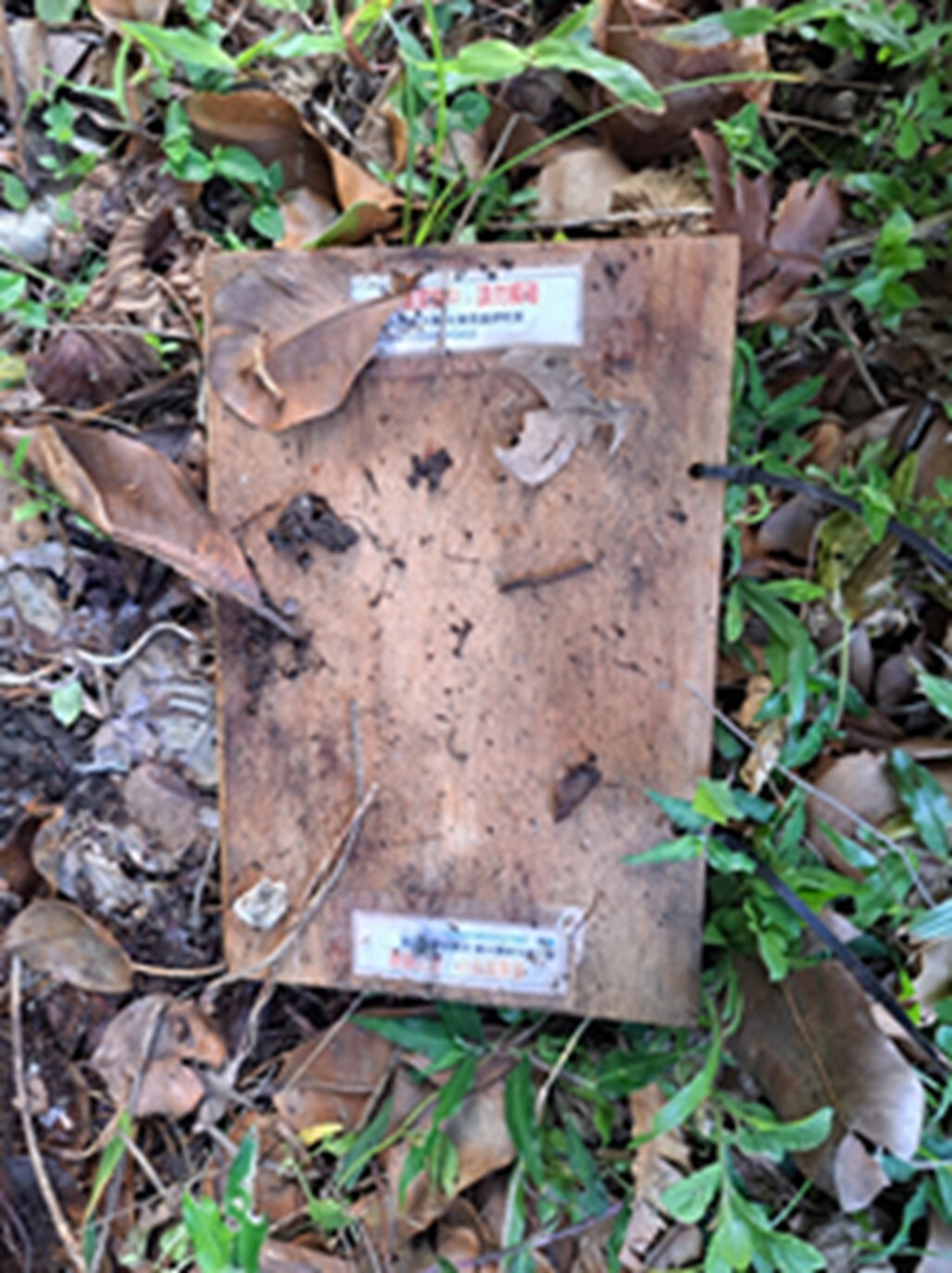
Figure 6. Designing artificial ant colony trap boxes to be placed in soil surfaces, near tree roots, or leaf litter layers where yellow crazy ants prefer to nest. These boxes can be used for monitoring the populations of yellow crazy ant supercolonies in the environment and also have the potential to directly remove reproductive ant nests (containing queens) from the environment, thereby contributing to control efforts.
6. Invasive Red Imported Fire Ant Control Operations
To ensure the safety of navigation and public facilities within the airport area, uphold the national image, and minimize the chances of fire ant attacks on airport staff and domestic and international travelers, the monitoring and control of the invasive red fire ants in the Taoyuan area (Dayuan District) must remain vigilant until eradication efforts are fully successful.
The goal of this project team is to continue the invasive red fire ant control work throughout Taoyuan International Airport. Due to the unique environmental constraints related to flight management safety, control personnel and operational timings must adhere to specific air traffic management regulations and climate factors. Therefore, effective management and execution of on-site control and detection activities, including planning and implementation of control methods and types of agents, require a team with both expertise in red fire ant control and experience in airport operations.
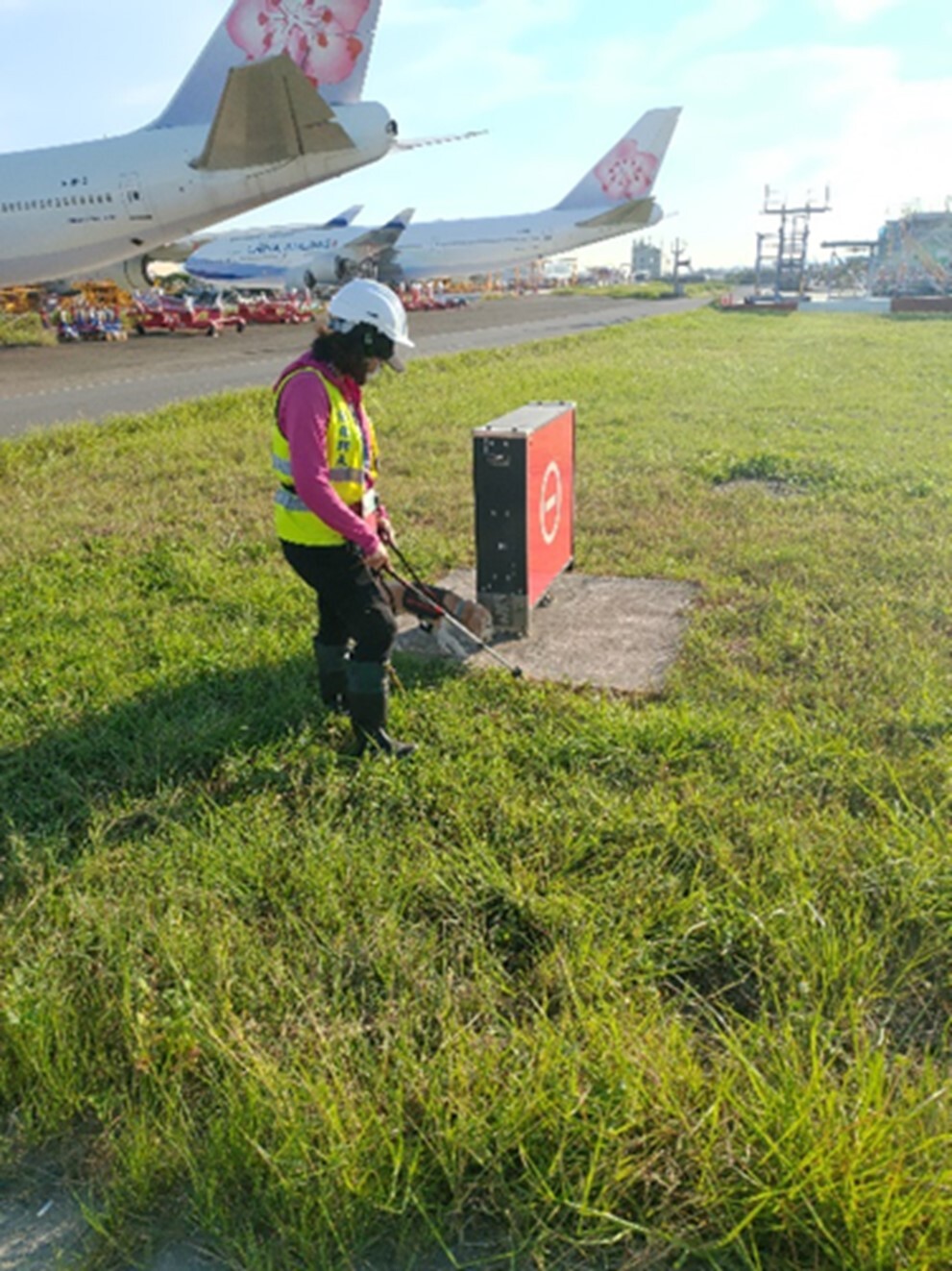
Figure 7. NCUE Taoyuan International Airport RIFA Control Team assisting in on-site detection work at Taoyuan Intl. Airport (RIFA detection dog operations).
7. Ecological Homelands and Urban-Rural Sustainability: A Changhua Ecological Art Project.
Changhua City Xiangshan Trail Eastern Park Ecological Tour Series Events: 'Xiangshan Trail Eastern Park' Ecological Mini-Tours.
In collaboration with Xiangshan Village, three "Ecological Tour Training Workshops" will be organized. These workshops will include both static ecological explanations of Xiangshan and on-site tour guide training. The goal is to promote ecological mini-tours at the Xiangshan Ecological Art Park, training 48 seed tour guides and serving 78 local residents. This partnership with Xiangshan Village aims to become a community practice partner in the local ecological sustainability system.
Additionally, students will be guided on an "Ecological Mini-Tour" at the partnered site, "Xiangshan Trail Eastern Park." This excursion will complement classroom learning on botany by providing students with real-life observation opportunities and expanding teaching methods through ecological tours.
|
Educational activities |
Date |
number of people |
|
Changhua City Xiangshan Trail Eastern Park Ecological Tour Training Workshop I |
2023/8 |
48 |
|
Changhua City Xiangshan Trail Eastern Park Ecological Tour Training Workshop II |
2023/9 |
48 |
|
Changhua City Xiangshan Community Ecological Tour Training |
2023/9 |
78 |
|
Xiangshan Trail Eastern Park Ecological Mini-Tour |
2023/12 |
12 |

Figure 8. Group Photo from the Changhua City Xiangshan Community Ecological Tour Training
Programme activities link: https://www.youtube.com/@USR-ew5yk

















